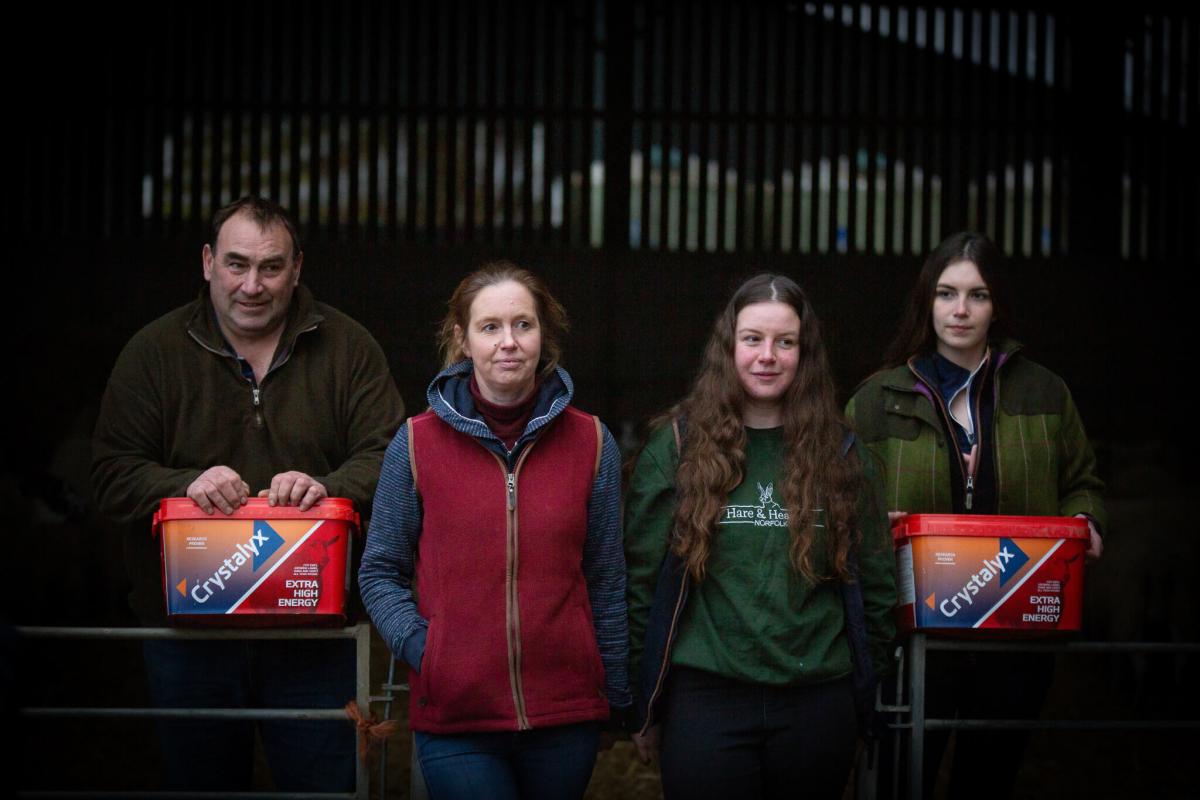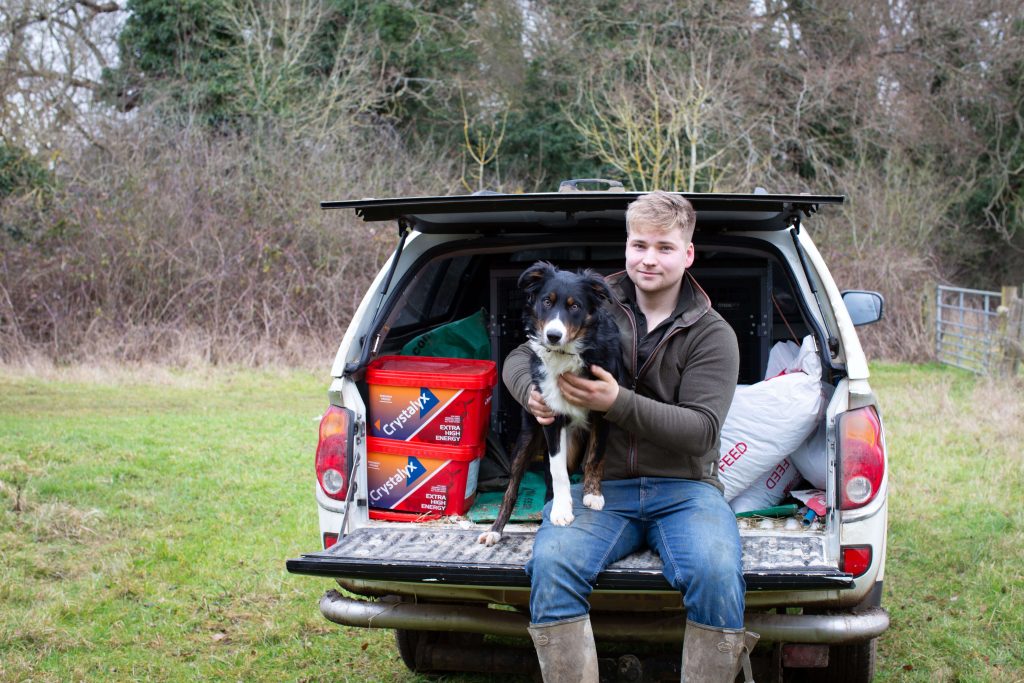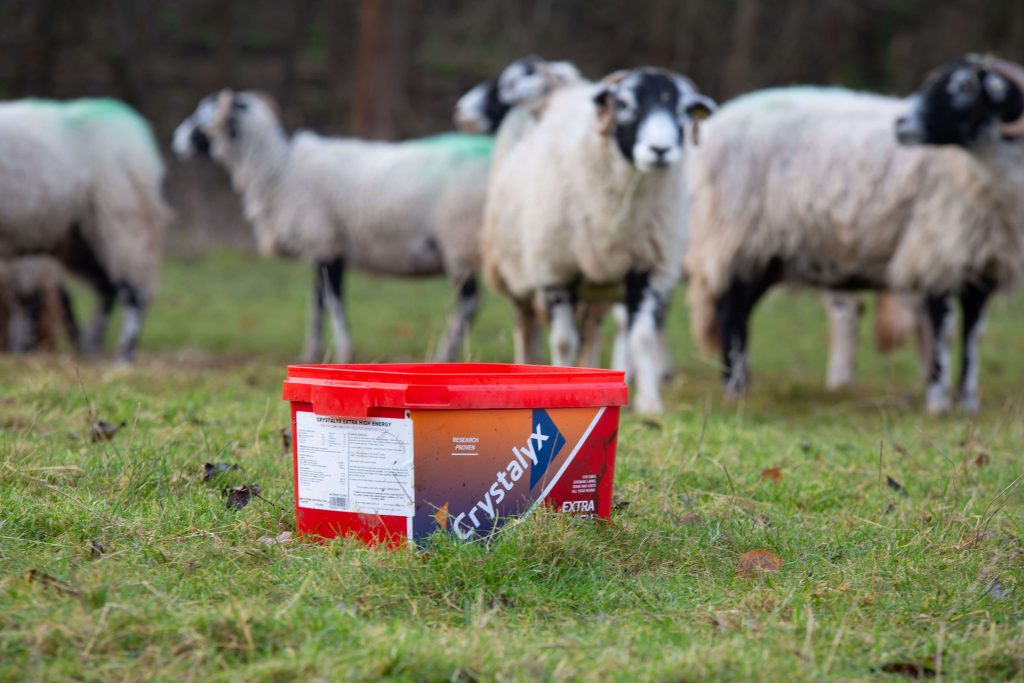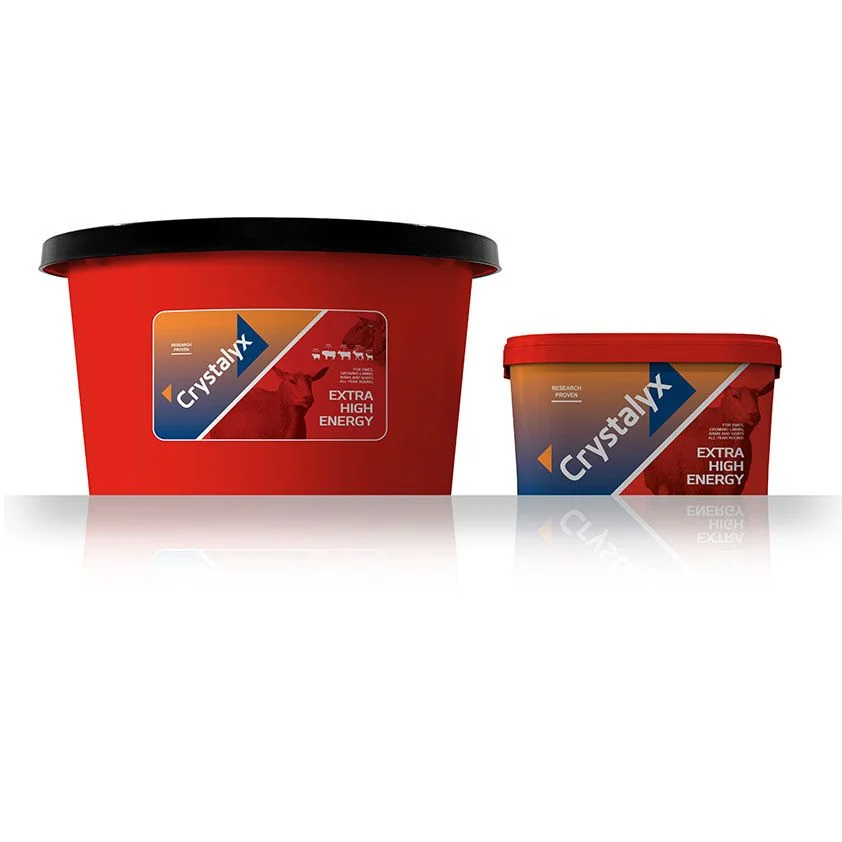
Like many producers nationally, four lowland sheep farmers spanning central and south England have endured challenging weather conditions these last couple of years. These adverse weather conditions have challenged how they keep ewes in good condition during the winter season and over lambing.
These farmers all have one thing in common: they are willing to embrace experimentation and change in the interest of increasing farm efficiency. They report on their experience with StowAg and Crystalyx and a step they've taken to consider how to feed sheep with nutrition in mind.
Keeping prolific ewes in good condition
Alan Collett has built up a flock of 2,700 sheep over the course of 30 years. Straight after leaving college, Alan started his farming career working at a nearby sheep farm. Alan was quick to take on his own farm and start up his own flock, taking on bits of ground as they become available to gradually build up to 1,880 acres.
Lambing from February through to April, Alan along with his wife and two daughters, takes no chances maintaining ewe condition throughout winter months to sustain their prolific ewes. “We’re on a lot of old pasture parkland, it’s not the best of grass, so we know we’ve got to look after them well to get the yields and get the lambs going”, says Alan.
“All ewes start on a feed lick from the middle-to-end of November, depending on the weather conditions and the amount of grass. We just put some in the bike trailer, take them round, and put them out as needed. The trebles stay on it all the way through to lambing along with sheep feed nuts. The doubles are fed it until they’re given nuts around 4 weeks before lambing. The singles just have a feed lick all the way through until lambing”
“Crystalyx is a really good tool for keeping sheep in condition over the winter. It maintains them well. We did try a different bucket, but we just felt they ate them too quick compared to Crystalyx. It definitely helps with twin lamb; we don’t really get a lot of it. Crystalyx just gives that extra bit of energy to keep them going when they think they need it”, concludes Alan.
High energy feed blocks for sheep
Ben Holmes started farming as soon as he finished college and had no hesitation expanding his numbers. That said, Ben is governed by the shortage of local ground, which has forced a hyperfocus on forage utilisation.
“I started with 15 Herdwicks and enjoyed it so much that I wanted to give farming a proper shot. So, I went on to buy 100 mule ewes which I ran onto as shearlings to sell for 2 consecutive years. Once I’d learnt how to manage sheep better, I bought 100 Swaledale shearlings to lamb to the Bluefaced Leicester”, says Ben.

“I got up to 170 ewes at one point, but it was knocking them back so wasn’t worth it. We’re now running 140, including some Blueface Leicester and odd ones, on around 50 acres in a 3 mile radius. It’s just right for the acreage. I would like to get more, but it’s difficult to find ground in the local area. So, every acre counts, and we definitely need to utilise every blade of grass we’ve got”.
“In the last year or so, I moved from bolusing to Crystalyx feed licks for the energy as well as the minerals and trace elements. The last two lambing’s, the weather has been horrendous and wet, but because they are now getting the extra sugars from molasses, the lambs seem to get on and suck better than they did before. I also found a big increase in scanning percentages”.
“Crystalyx is better value than other feed licks I’ve used. The ewes can have as much as they want, but because it’s hard, they can’t just eat it in chunks; they have to work for it. I find it goes a lot further and stands up really well in the wet weather”, concludes Ben.
Tackling twin lamb disease
Felix Johnson-Gibbs is a first generation sheep farmer who started his farming journey aged only thirteen. Now running a hundred breeding ewes and fifty ewe lambs alongside working part time on a local mixed farm, Felix has embraced trial and error in a bid to build a seamless system that he can continue to progress.

“I’ve always wanted to farm, but it has been difficult and hard work getting into it. Hats-off to anyone brave enough to do it. I’ve farmed since I was physically able. I did an apprenticeship through agricultural college on a mixed farm. Since then, working on other farms, I’ve used my learnings and earnings to build up my own flock. While it’s been financially difficult, I’ve had no end of help from local farmers. I probably wouldn’t be where I am today without their support and knowledge. If I’m ever stuck, they’ll help me out”, says Felix.
“Our land isn’t bad. A lot of it is on the hillside, which is quite hard, so I can keep sheep on it longer. I use a feed bucket with the breeding ewes from autumn, through tupping time, through the winter, and until after lambing.
“The winter months these last three years have been wetter and harder on the sheep. But our sheep still did better - that’s when I found that Crystalyx was the best. The sheep hold their condition better and the bucket lasts longer. Before we started using Crystalyx, we did suffer a bit with twin lamb disease”, concludes Felix.
A focus on feeding efficacy
Duncan Hawley lambs 400 Suffolk-cross and mule ewes and rears 200 ewe lambs annually in partnership with his parents and wife. All lambs are sold as fat to the local abattoir, and ewe lambs are sold in the summer sales. The family farm once focused on cattle but was forced to stop due to bovine TB. To bridge the gap, sheep numbers were increased, and Duncan’s goal has been to steadily expand the flock while keeping cost-effective production at the heart of his approach.

Duncan’s journey to using Crystalyx feed blocks began by chance, thanks to an unexpected delivery mix-up. “It’s quite a funny story, really,” he explains. “I hadn’t planned on switching, but I needed to put some feed buckets out, so I decided to give Crystalyx a try.” Having previously used other feed licks; Duncan quickly noticed a significant difference with Crystalyx. “What stands out is the longevity. Ewes don’t consume Crystalyx blocks at the same rapid rate. They last much longer, and we’re really impressed so far.”
“The ewes used to go through other feed licks like smarties - they were hammering them, and I could feel the impact on my wallet! I could even press my thumb into those blocks. With Crystalyx, the composition is much more solid, and the ewes have to work at them. They can’t just bite into them. So far, the results speak for themselves - our ewes are in excellent condition.”
Best feed block for sheep
The low moisture status of all Crystalyx feed licks is achieved through a unique and highly controlled manufacturing process. During production, the molasses-based feed block goes through a slow cooking process that reduces moisture levels down to just 2-3 percent. This concentrated formulation enhances nutrient density, minimises the risk of overconsumption by preventing biting behaviour, and ensures product stability under harsh weather conditions. The palatability coupled with the hard crystalline structure encourages little and often licking which, by design, promotes consistent rumen stimulation over time. This controlled consumption also extends the lifespan of each block, ultimately making Crystalyx one of the cheapest products to feed per head per day.
Independent research trials have reported Crystalyx intakes ranging from 33.0 to 50.2 grams per head per day to deliver great animal performance results. In comparison, some other feed blocks on the market have reported intakes as high as 150 to 200 grams per head per day.

